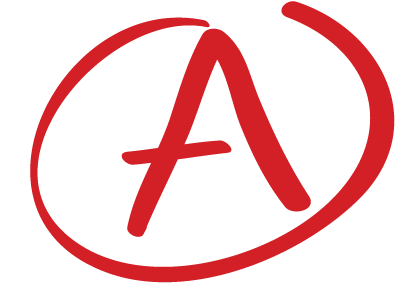I have tutored math, been a math teaching assistant, or instructed mathematics at university part time, off and on for almost a three decades now. I would never call myself a teacher and don’t pretend by any means to have formal skills or knowledge in teaching or education. However, I have been able to help students of all ages gain confidence and results in mathematics that they, at the very least, are satisfied with. Since I have no formal training in education, I don’t have the vocabulary to describe my approach to helping students except that it is a diagnostic approach to math tutoring. I will describe my approach and thought process when helping a student. The underlying message behind each step is that mistakes are ok and it’s the only way to really learn math, and really learn anything. Let’s begin!
“Diagnostics” of the Diagnostic Approach to Math Tutoring
- The Work Begins (The First Exercise)
- Comfort and Confidence
- Identifying Gaps and Weaknesses
- Strengthening Weaknesses and Filling in Gaps
Two Pronged Approach to Success
“Diagnostics” of the Diganotic Approach To Math Tutoring
The student
First off, I don’t distinguish by the age or ability of the student. To me these factors are irrelevant. What I do make note of is how great is the desire for the person to want to improve and how great their willingness to communicate about the subject and their challenges; their openness to trying and doing; their willingness, dedication, and patience to work to get the results they desire. If they are a minor or if a parent or guardian is involved, usually on the financial side, I see how active they are in the student’s progress and life.
Ideally, for a student with a parent or guardian involved I would like to have full participation from both. But in many cases and especially with the lifestyles, family dynamics, our continuously over scheduled lives, many parents/guardians are quite hands off and just let the student steer. This isn’t always the best recipe for long term growth and deep change but a temporary and cosmetic fix to address the most recent low grade.
Once I have determined who I am working with, the work begins.
Usually these are just details provided in writing or verbally. E.g. Kate is in grade 10 mathematics advanced. She is very hard working. She had good grades until grade 9 and this year she is struggling, and we thought a tutor would be helpful. Katie gets good grades in all other subjects and wants to go to university in the future. We are here to support her. Etc. You get the idea!
The diagnotics of the diagnostic approach to math tutoring begins here but is ongoing throughout.
Information gathering
I request and gather as much information as possible and this requires work on the student’s part and sometimes the parent/guardian’s (hereafter referred to as just “parent”) part. This information will help me determine what the student has been exposed to; where the students is weak; how the teacher marks; what kinds of questions the students is being tested on and the evaluation process; types of resources the student is being provided to learn from; and so much more.
I will also ask the student questions. The quantity, depth, and breadth of the questions will depend on the information that I was provided.
Meeting the student
Through the discussion above with the student, I will get a feel for how the student feels about the subject, there overall confidence, general sentiment towards education, math, learning, their goals after this course, the purpose of this course for them, there interests in school and outside of school, their schedule, family, friend, pets, extracurricular interests and more. It is amazing how much you can learn about a person through a conversation and dialogue interspersed between learning and tutoring.
“Math Tutoring” part of the Diagnostic Approach to Math Tutoring
The first exercise (The work begins – learning more about the student in action)
I will then go over how a session will work, and this is usually through doing. That is, we’ll start with a problem the student is struggling with. If the session is in person, then on paper and pencil with the student doing the work and me providing guidance and direction. If the session is virtual, we’ll quickly go over how the whiteboard works, ensure everyone is able to use it comfortably, upload the exercise the student wants to work on and then the student starts. Same process as with paper and pencil.
Comfort and confidence
Through this first exercise I will find out more how comfortable the student is with the material, writing, making mistakes, communicating mathematics. Many of the questions asked in 3 may be asked again or for the first time during this first exercises. I will step in whenever the student seems to be struggling and get them going again.
Identifying gaps and weaknesses
It is through the process of working through exercises and going over problems and questions the student wasn’t able to do at school that weaknesses will be brought to the forefront. Where there is an obvious weakness or lack of knowledge and understanding, I will take a detour from the original problem, and we’ll work on that weakness.
Strengthening weaknesses and filling gaps
Working on the weakness can include going over the points of that topic and doing some practice exercises; providing a quick refresher; finding resources online that the student can use to go over the material on their own if it’s very large area they are weak on; going back in the class notes and working through that material for awhile. It depending on what the weakness is and how far back in the student’s educational career the weakness goes. E.g. A student in grade 12 that is having trouble with simplifying rational expressions, the problem may be working with fractions. Fractions were introduced in elementary school. We’ll have to go back to basics, review the basic arithmetic operations for fractions and move on while providing the student with practice to do on their own until the next session.
The goal is to approach the “problem” from two angles. The first is addressing the material that is current, so the student doesn’t fall behind and become more discouraged with the material currently being learnt in class. Second, addressing any weaknesses that have been accumulated over time. These will be discovered during the process of working the first angle.
Two pronged approach to success
Initially, this process requires a greater time commitment on the student’s part with studying and reviewing and may feel a bit frustrating and like they are moving backwards. However, just as with reading and writing, if you don’t know your alphabet, how to use the letters, how to create a sentence, you won’t be able to communicate. Math is a language and learning the ABCs and learning the rules on how to put the ABCs of math together in a way that makes sense, will only make it easier to communicate to other anywhere in world what you want to say.
Side effects to this two pronged approach
The process above will require a lot of mistakes along the way to learn. While helping with mathematics other things will be indirectly taught and developed.
For example, confidence, self esteem, study skills, test taking skills, time management, research skills, self learning skills, how the student learns best, communication skills, writing skills, verbal skills, organizational skills, problem solving skills, pattern recognition, social skills, assertiveness, discipline, persistence, goal setting, attention to detail, checking and verification, self management, respect, collaboration, and so much more. The list is endless to the skills that will be developed during tutoring. I’ll go into more detail on this topic in another blog post and my holistic approach to math learning, tutoring, and knowledge.
Conclusion
This diagnostic approach to math tutoring is my personalized method for helping students excel in mathematics that I’ve developed over time during hands-on tutoring without formal teaching credentials. Central to my approach is the belief that mistakes aren’t just acceptable; they’re essential for genuine learning. I don’t differentiate students by age or ability; instead, I focus on their desire to improve, their willingness to communicate, and their dedication to put in the work. While parental involvement is a bonus, I understand that modern life often makes it challenging.
My process begins with thorough yet swift information gathering to understand each student’s unique background and challenges. We then build a rapport to explore their feelings toward math and learning in general. This is through working with them and information provided by the student or parent. Our first session is hands-on, tackling problems they find challenging to identify gaps and weaknesses. I employ a two-pronged strategy: addressing current material to keep them on track while simultaneously reinforcing foundational concepts they’ve missed along the way. This holistic approach doesn’t just improve their math skills; it also fosters confidence, enhances study habits, and cultivates valuable life skills. I’m not here to help students master mathematics but to gain study, learning, and problems solving skills they’ll use throughout life. Math is just the vehicle for this at this stage of their life.




